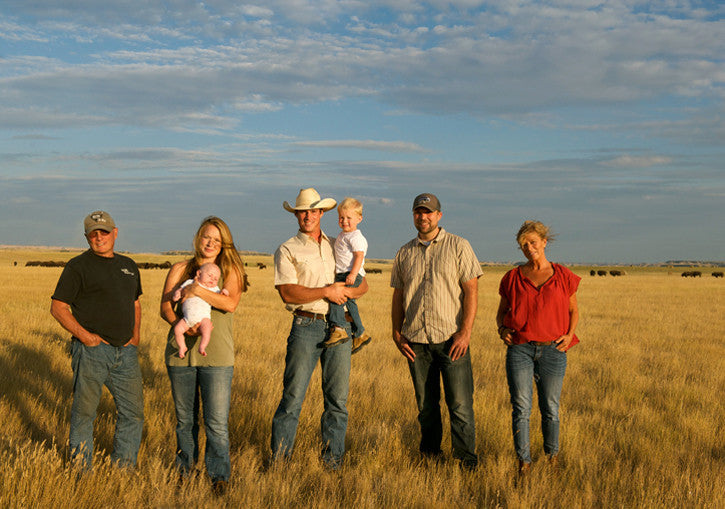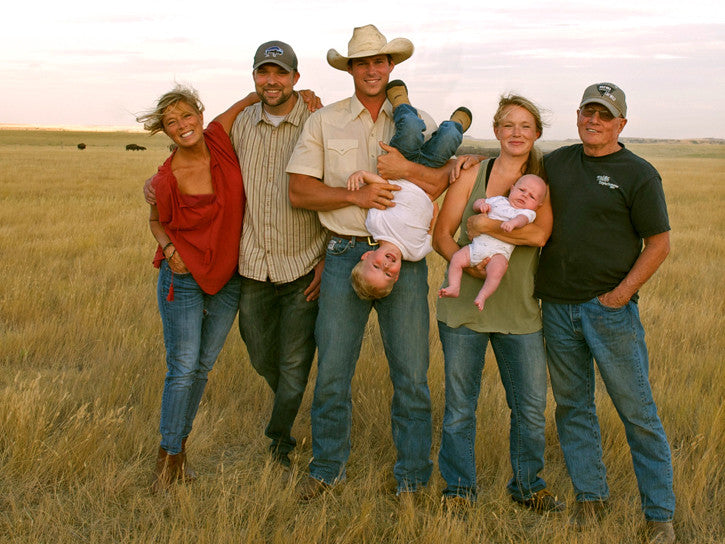When the Great Plains were young there were no humans to manage them. No humans to plow the soil, string barbed wire along the river banks, choose the crops to plant on the flats, or decide on the number of animals to graze the grass. It was like one enormous ranch, managed on the single principal of natural selection. In those days the Great Plains changed so slowly that, for all practical purposes, they were in stasis—perpetually beautiful and wild.
About 20,000 years ago, when humans crossed the Bering land bridge that briefly joined North America with Asia, they found a wonderland of plenty and immediately began to alter it. Early hunters killed off many of the animals that had evolved to thrive on the central grasslands of North America. Those animals had learned to move across the Great Plains in huge numbers and thrive on the specialized vegetation that evolved alongside them. But many species had not evolved a fear of humans and, if they couldn’t evolve fast enough, they perished.
Then the humans began to divide the Great Plains up into hunting grounds and fought to the death over the boundaries they created according to mountain ranges, rivers, or imaginary limits. Within those divisions, animals began to be culled, prairies were burned to herd the animals into more convenient hunting areas, and berries and roots were harvested for the first time. In a way, those old hunting grounds were the first Great Plains ranches. They were huge but suddenly the hand of man had begun to fiddle with the management of the Great Plains. The constriction of the land would continue until the present day.
By the middle 1800s the Native claims to the land were being extinguished one by one and the era of the cattleman was at hand. Based on the European notion of a "commons" for grazing animals, the old hunting/gathering “ranches” of the Natives were replaced by free-range sheep and cattle ranches, often owned by European syndicates. Many of these new, open-range ranches were carved from individual Native hunting grounds. Still, many of the new ranches were hundreds of thousands of acres. The advent of over-grazing put new management stresses on these nascent eco-islands. Homesteading and barbed wire furthered divided the Great Plains’ pie, destroying the migration paths of animals, limiting the health of grasses that need space, and threatening everything that had depended on the vastness of the Great Plains for protection. By the twentieth century the Great Plains were being managed by tens of thousands of human land managers, each with different ideas about their land and few with any idea of the potential damage of dividing a huge ecosystem into tiny fragments.
Homesteading and barbed wire furthered divided the Great Plains’ pie, destroying the migration paths of animals, limiting the health of grasses that need space, and threatening everything that had depended on the vastness of the Great Plains for protection. By the twentieth century the Great Plains were being managed by tens of thousands of human land managers, each with different ideas about their land and few with any idea of the potential damage of dividing a huge ecosystem into tiny fragments.
In 2000, when we bought our Cheyenne River Ranch it was one of those fragments—a little over nine-hundred acres in an ocean of heterogeneous, dysfunctional fragments. A hundred years before it had been part of huge Texas based ranch of hundreds of thousands of acres. In more recent years it belonged to the Midwestern Cattle Company out of Chicago. From the Midwest Cattle Company our little section of the ranch was transformed into what was known locally as the JB ranch. By the time we bought our little section, the JB had been breaking up for years. With each sale it got smaller until we bought that little nine hundred acres and, in a grandiose gesture, named it the Cheyenne River Buffalo Ranch. We knew that we were moving onto a degraded version of what the Great Plains had been—that the subdividing of the prairie was a death sentence and that subdividing was so profitable in our economic system that there was little chance that it would cease. It seemed that ranches would continue to shrink, and, like Humpty Dumpty, no one would ever be able to put them back together again.
By now the kids were passionate about the conservation work we were doing and about Wild Idea Buffalo Co. There would be grandchildren in the future too. What would be our legacy to them?

(O'Brien Family: Dan, Jilian, Barrett, Colton, Lincoln, Lucas and Jill)
When a US Forest Service lease became available to us, our family decided to try to reverse what had been the norm for many generations. We acquired the lease and switched the whole ranch to the exclusive job of raising buffalo—as it had been before the great human fiddling had begun. It might have been a silly thing to aspire to and the job would never end, but it was something that we had to try. We took no profit out of the ranch, no new cars, or fancy vacations, and all family members worked outside jobs too. Then, two years after we moved onto the original Cheyenne River Ranch, our bachelor neighbor died and we were able to borrow the money to buy his little ranch. We put the whole place into a conservation easement which we sold for the down payment on the next adjoining land that came up for sale. By 2015 we had 3,200 acres of the old JB ranch back under one owner and a grazing permit on 24,000 acres of the Buffalo Gap National Grasslands. Then a strange thing happened.
A hunting buddy and his wife let me know that his family had noticed what my family was doing. We were on a fishing trip and, in passing; he told me that he’d be interested in buying a ranch and leasing it back for us to manage as part of the Cheyenne River Buffalo Ranch. I thanked him for his offer but knew that people often talked about such things but seldom followed through. I was pretty sure the proposal would never come to fruition. It was also unlikely that another ranch right beside the CRBR would come up for sale and if it did, I’d probably never have the nerve to call and ask the guy to follow through. The week before this past Christmas, I got a call from the man who owned the ranch right beside us—the remainder of the old JB ranch. He was a corn farmer from Nebraska and he had over extended himself at the bank.
After the call, I sat in my chair contemplating the call. The acquisition would add another 6,400 acres to the CRR, but it was far beyond our resources. I was still staring at the telephone and I thought about simply calling my friend. But I couldn’t do it without stewing for five days. When I finally found the courage, I told him that a large ranch had come up for sale. It would fit perfectly into the Cheyenne River Buffalo Ranch and it would put the JB back together. He had no idea what the JB was, but he simply said, “Let’s buy it.”
The details took about four months. There were all kinds of lawyers with long lease agreements. There were some fences that had to be altered to accommodate buffalo. When we moved four hundred and fifty head of buffalo into their brand new pasture they leaped about with delight, which Jill captured on video.
The herd was in full frolic mode, apparently as happy as we are to begin reversing the tragedy of downsizing the scope of America’s Great Plains. The dream continues... we can only hope that it’s not too heavy to carry forward.

Goofing off during family photo session. Most typical - but not so fun for the photographer! ;)
Photo credit: Jill O'Brien

62 comments